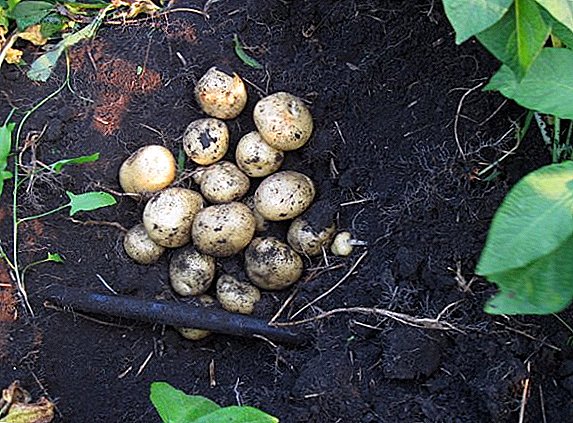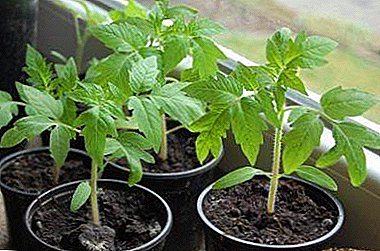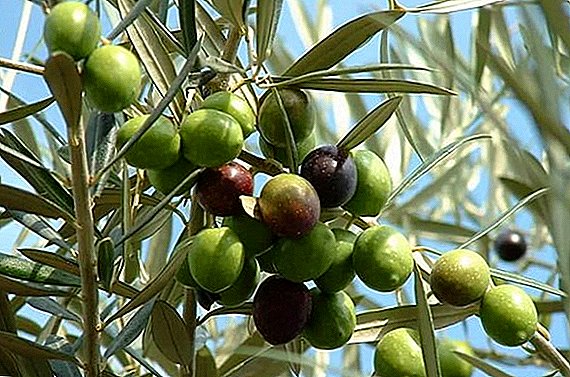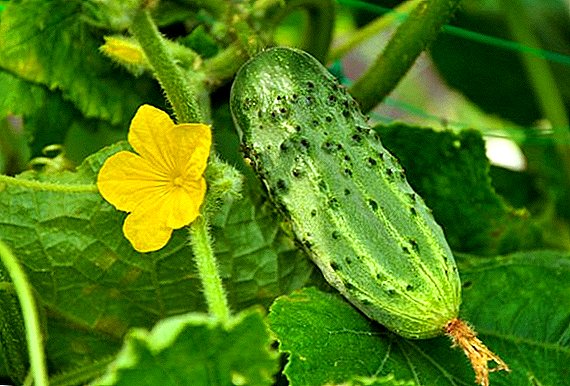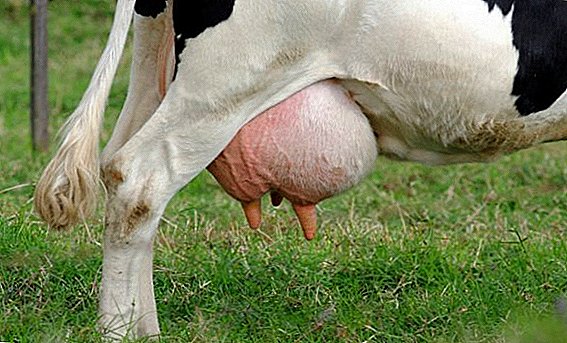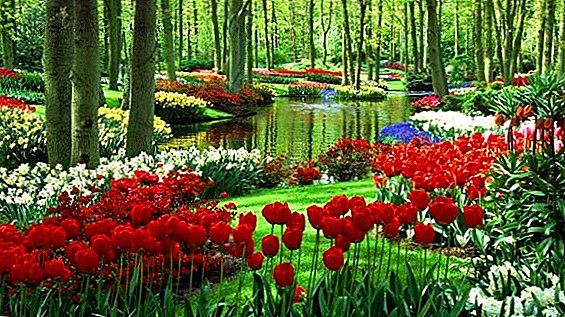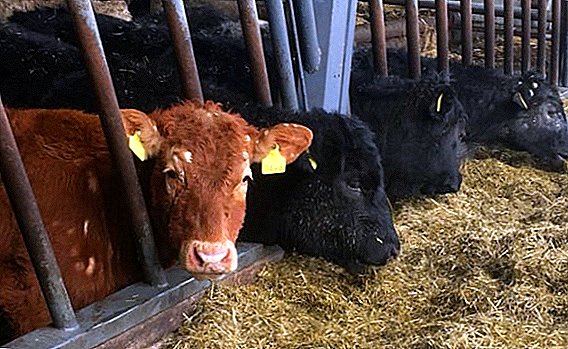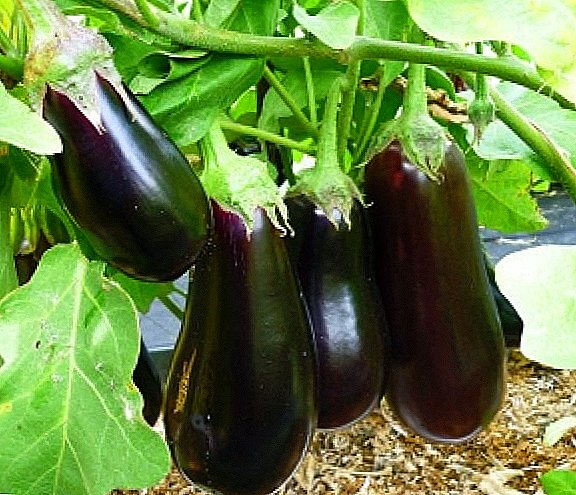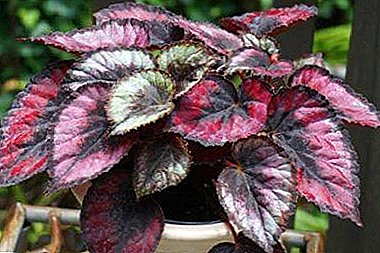
The royal begonia, also known as the Rex begonia, is one of the most beautiful and favorite varieties of this plant. The flower has large bright and luxurious leaves of various shapes and colors. At the same time, begonia flowers are small and inconspicuous. The plant is unpretentious in the care, but it reacts painfully to the violation of conditions of detention. This article will tell you about the growth of the royal begonia, plant reproduction by cuttings, leaves and seeds, the care of the Rex variety at home and the most common diseases and pests.
Growth features
Royal Begonia - a perennial, herbaceous plant, which is considered the birthplace of India. The flower has powerful rhizomes, a small fleshy stem, large, pointed leaves. Sheet plate bright with a variety of colors. There are: green, crimson, scarlet, purple silver and lilac colors. They form a unique pattern, thanks to the streaks.
Leaf plates are large, rough, so the plant evaporates moisture well. This process promotes active nutrition of the roots and their intensive growth. And the asymmetry of the leaves allows them to absorb large amounts of sunlight. The plant has small pink flowers about 1 cm in diameter. In height the plant reaches 40 cm.
Royal begonia light-loving and moisture-loving plant, prefers a mildly acidic substrate and increased air humidity (50-60%). The rest period in begonias lasts from October to April. Since late April, the royal begonia enters the vegetation phase (active growth of new shoots begins). During this period, it is placed in a lighted place, often watered and fed.
A photo
Below you will see a photo of the Rex Begonia.




How to multiply?
The most popular way of breeding royal begonias is with leaves or fragments of the stem (cuttings) and seeds.
Leaf reproduction
- Choose a large healthy leaf.
- Cut it with a sharp tool so that the stem remains.
- The cut sheet is placed on the glass and make cuts on it in the places where the veins pass.
- The cut sheet is placed on the soil in a container and the petiole is deepened. Container should be prepared in advance.
- From above the sheet is pressed down by small and lightweight stones.
- The container is covered with a film or glass. This creates a minipack.
- The greenhouse is installed in a warm and bright place, the soil is periodically moistened, preventing the soil surface from drying out. Watering is carried out carefully around the edge of the container so that the leaves are not rotten.
- In this form, it remains until the appearance of young shoots. After 2-3 weeks, young sprouts will appear from the cuts and stalks.
- When the shoots grow up to 6-7 cm, they are deposited in separate cups.
- As the soil is used soil for begonias and sand, in a ratio of 1: 1.
Important! The trimming tool must be disinfected. To do this, the knife blade is immersed in medical alcohol for a few minutes.
We invite you to watch a video about breeding leaf:
Cuttings
- Prepare the container and soil as described above.
- Cut a stalk about 10 cm high.
- Remove lower leaves.
- It is desirable to process the cut with the drug "Kornevin" (root growth simulator).
- With a stick, make a hole in the soil and insert a cutting, deepen it, press down the soil around the cutting.
- Cover with a cut plastic bottle on top.
- About a month later there will be young shoots.
We invite you to watch a video on breeding begonias cuttings:
Seeds
- The container and the soil is prepared (as described above).
- Before sowing, moisten the soil with a spray bottle.
- Gently tweezers need to spread the seeds, you can gently push into the soil (the earth does not sprinkle), cover with plastic wrap on top.
- Put the container in a dark place.
- Airing crops daily.
- After the emergence of seedlings rearranged on the bright window sill.
- After the appearance of the first leaves of the plant are planted in separate cups and sprayed with a solution of zircon for better rooting.
Reference! When breeding begonias in minitlushchichka shoots should be aired. To do this, open the greenhouse for half an hour every day.
Care for Rex variety at home
Despite the fact that the begonia is an elegant and delicate flower, it is quite unpretentious. However, there are rules that must be followed in order for the plant to be healthy and strong.
The necessary conditions:
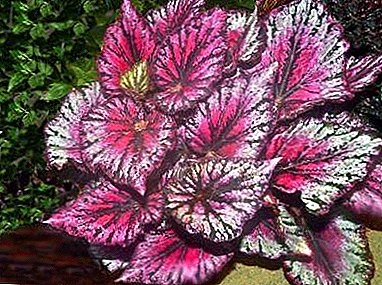 Air humidity. Like all subtropical and tropical plants, royal begonia needs plenty of water, and also likes moist air. Very useful here will be a humidifier. If there is none, you can use a wet gravel pan on which the plant pot is placed. Spray the plant should not be, because the leaves appear on the leaves and the flower can get sick.
Air humidity. Like all subtropical and tropical plants, royal begonia needs plenty of water, and also likes moist air. Very useful here will be a humidifier. If there is none, you can use a wet gravel pan on which the plant pot is placed. Spray the plant should not be, because the leaves appear on the leaves and the flower can get sick.- Lighting. Begonia loves bright but diffused light. The best option is western or eastern windows in summer and southern ones in winter. When there is insufficient lighting, the stem of the flower is drawn out, with an excess of light, burns appear.
- Air temperature. The optimum temperature for the royal begonia is 20-25 degrees during the day and 18-20 degrees at night.
- Substrate for begonias. It includes:
- subacid peat - 1 part;
- humus -1 part;
- leaf or turf ground - 3 parts;
- perlite or vermiculite (baking powder).
Soil acidity for begonias should be in the range of 5.5-6.5.
- Watering:
- In summer, the flower should be watered abundantly, as it does not tolerate drought.
- Watering should be uniform and regular, about once every 2-3 days - in summer and once a week - in winter.
- The flower is watered after the topsoil has dried, early in the morning or in the evening, but in no case in the hot time of the day.
- After watering the water from the pan is poured to avoid stagnant moisture in the soil.
- If the earth lump dried up, then you need to immerse the pot in a container with warm water for several hours.
- For irrigation use water, separated during the day, it should be at room temperature.
- From time to time, the soil in the pot needs to be loosened for optimal air exchange and preservation of moisture in the pot.
Attention! The leaves of the royal begonias are very fragile, therefore, wipe, water and fertilize the plants should be very carefully.
- Top dressing:
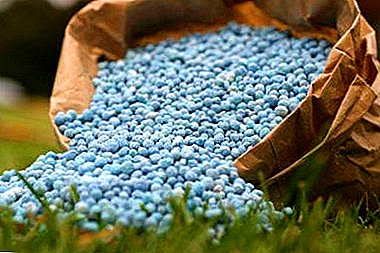 The frequency of feeding - once a month during the growing season and once every two months rest period.
The frequency of feeding - once a month during the growing season and once every two months rest period.- For fertilizing complex mineral fertilizers are used.
- Fertilizers should be applied only in moist soil, if the soil is dry, the roots can suffer.
For dressing the royal begonias use fertilizers for decorative leafy plants, dosage 1/4 of the recommended on the package. It should be remembered that this flower belongs to the ornamental-deciduous varieties, which means that it is important for it to grow green mass. And for that you need nitrogen. Before buying fertilizer be sure to pay attention to the proportion of nitrogen in its composition.
The best option is equal parts of nitrogen, potassium and phosphorus (NPK 10-10-10). It is also important to pay attention to the alkaline composition of the pH fertilizer. Fertilizer with a pH of 8-10 is absolutely not suitable for the royal begonia, it alkalizes the soil and inhibits the absorption of nutrients from it.
Some fertilizers for begonias have an unacceptable pH level!
Diseases and pests
- Mealy dew. Fungal disease, a characteristic feature of which is a mealy coating on leaves and stems. As the infection progresses, the leaves are deformed, curled, dry up and fall off. Then the development of flowers stops and the plant dies. The main reason is poor airing of the room. As a result, condensate accumulates on the leaves, there is an excess of moisture in the soil, and this is a good medium for the spread of fungal spores.
- Gray rot (fungal infection). The reason - too high humidity and spraying from the spray. In this case, moisture accumulates on the sheet plates. A characteristic feature is the formation of brown spots that cover flowers, buds and leaves. If the disease is not treated, the stems become weak and brittle, the leaves turn black and fall off, growth stops.
- Spotting. If small wet spots appeared on the plant - this is a sign of bacterial spotting. What plant to save is impossible to destroy, and to disinfect the pot. The soil should also be thrown away. After that, the pot is treated with a solution of potassium permanganate or copper sulphate.
- Spider mite. Signs of appearance - the formation of yellow spots on the leaves and silver plaque with bronze stripes in the lower part of the sheet. If the pest has spread, numerous small holes appear on the sheet and cobwebs are formed. The result is a deformation of the leaf plate, violation of the leaf structure, leaf dropping and the death of the plant.
- Orange aphid. The plant affects both adult insects and larvae. Mostly affected young shoots and leaves. Pests suck cell sap from the plant. The result is yellowing of the leaves, dropping flowers and buds. A characteristic feature is sugary discharge and parasite excrement on the underside of the leaf. In addition, aphid carries malicious viruses.
Proper care and conditions - the guarantee of health and longevity of the plant. Approach this most responsibly and be sure to get a good result. Royal begonia gentle, but still unpretentious flower. Follow the simple rules of care and the plant will delight you for a long time with its beauty.


 Air humidity. Like all subtropical and tropical plants, royal begonia needs plenty of water, and also likes moist air. Very useful here will be a humidifier. If there is none, you can use a wet gravel pan on which the plant pot is placed. Spray the plant should not be, because the leaves appear on the leaves and the flower can get sick.
Air humidity. Like all subtropical and tropical plants, royal begonia needs plenty of water, and also likes moist air. Very useful here will be a humidifier. If there is none, you can use a wet gravel pan on which the plant pot is placed. Spray the plant should not be, because the leaves appear on the leaves and the flower can get sick. The frequency of feeding - once a month during the growing season and once every two months rest period.
The frequency of feeding - once a month during the growing season and once every two months rest period.